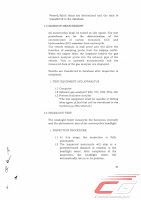Thursday, July 18, 2019
The LTO Will Make Sure Your Vehicle's Road Worthy Before Registration
After implementing a demerit-based system for Driver’s License holders in the Philippines, it looks like the Land Transportation Office (LTO) will also closely scrutinize the road worthiness of vehicles.
Largely flying below the news radar the past few months, motorists will be required to have their vehicles certified for road worthiness prior to its registration very soon. This is based on the LTO’s timeline to bring Private Motor Vehicle Inspection Centers or PMVICs up and running across the country.
PMVICs are essentially the Department of Transportation’s Motor Vehicle Inspection Centers (MVICs) privatized through an authorization committee within the agency (through Department Order 2019-002).
The LTO has identified 138 PMVIC locations, based on the population and annual income. The National Capital Region (NCR) has the most with 34, followed by Region 4A with 15, and Region 7 with 14. After it opened the application, the LTO received a total of 431 applications.
Based on Memorandum Circular 2018-2158 and since revised through Memorandum Circular 2019-09, each PMVIC will test both two- and four-wheeled private vehicles and will cover even more stuff than what’s typically found in a casa’s free safety check.
Inspected items include everything from lights and windows to stabilizers/bushings to engine brackets and fluid leakages (if any). From there, every vehicle will have to undergo a series of automated test using equipment that complies with international standards (CE, ISO) to check things like alignment (sideslip test), brakes (roller brake test), lights (headlight test), and of course, emissions (you can check the revised test parameters below).
The cost for motorists? Currently unknown. While the original Memorandum Circular indicated a P 1,800 fee (P 900 for re-tests) for 4-wheeled, and P 600 (P 300 for re-tests) for 2-wheeled vehicles, the DOTr has since changed it to “shall be determined after a public consolation in coordination with LTO and LTFRB.”
Though the process will add another 30 minutes (or more) to a vehicle’s registration process, if implemented well, this can potentially snuff out dilapidated and road-unworthy vehicles before they can cause an accident, or worse.
Subscribe to:
Post Comments (Atom)















No comments:
Post a Comment
Feel free to leave your comment or share your views. Comments that are derogatory and/or spam will not be tolerated. We reserve the right to moderate and/or remove these comments.